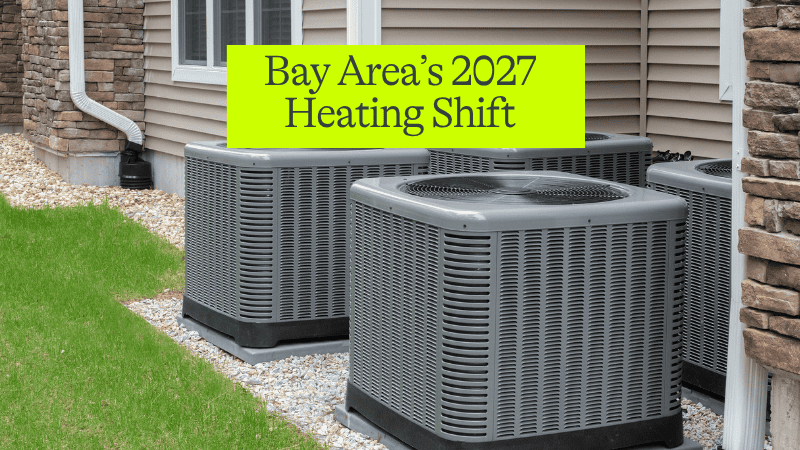How States Are Stepping Up to Keep Heat Pumps Pumping Post-Incentives
By
Varsha Madapooosi
.jpeg)
Federal Incentives Fade, States Must Fill the Gap
Evergreen Action warns that with the passage of the One Big Beautiful Bill, many federal incentives for home electrification will vanish or be reduced. That means state and local governments will need to take action to keep the clean-energy transition on track.
The article proposes three major levers states can use to sustain progress—even after federal support recedes:
- Utility incentive programs updated for beneficial electrification
- Cap-and-invest revenue streams directed to home upgrades
- Clean Heat Standards that require heating fuel providers to support emissions reductions through electrification or efficiency measures
These policies aim to make heat pumps more accessible and affordable for all households, not just those who can front large capital costs.
Tackling Upfront Cost Barriers for Homeowners
One of the biggest obstacles to widespread heat pump adoption is the high upfront cost—especially when rebates and credits wane. Evergreen highlights several state-level policy tools that can help:
- Low-cost or on-bill financing programs
- Point-of-sale rebates and incentives
- Direct-install programs targeting low-income households
- Cleaner electricity rate structures for heat pump users
These approaches can ease the burden of the first investment and ensure more households can participate in electrification without excessive financial risk.
States Already Leading by Example
Evergreen points to states like Maryland—where the EmPOWER program has been updated to go beyond mere electricity savings, explicitly supporting electrification as part of emissions goals. Other states like Colorado are moving toward Clean Heat Standards that mandate a gradual shift in heating fuel mix toward low- or zero-emission options.
In these cases, the public sector is taking a more active role in creating the market conditions for electrification—not just relying on homeowners to act alone.
California Incentives Put Electrification Within Reach
California is already setting the pace with some of the nation’s most generous electrification incentives:
- Energy Smart Homes Program: Rebates for whole-home electrification projects, rewarding homeowners who replace all major gas appliances with electric alternatives.
- TECH Clean California: While standard heat pump systems qualify for only a $1,000 rebate, air-to-water heat pumps qualify for up to $5,000.
This distinction is critical because Harvest’s integrated air-to-water system qualifies for the higher rebate level. When combined with Energy Smart Homes incentives, homeowners can dramatically reduce upfront installation costs—often by thousands of dollars more than standard heat pump options.
How Harvest Is Poised to Thrive in a State-Driven Transition
Even as federal incentives wind down, Harvest’s product architecture and business model align strongly with the state-level pathways Evergreen describes. Our systems integrate heating, cooling, hot water, and energy storage—a configuration that is more resilient to changing policy landscapes.
Because policy makers are moving toward funding mechanisms that reduce upfront costs (e.g. on-bill financing, point-of-sale rebates, and clean heat mandates), Harvest’s approach of bundling financing, installation, and maintenance becomes especially relevant. And in California specifically, Harvest benefits from higher-value rebates than standard heat pumps, making the economics even stronger for multifamily developers and homeowners alike.
States Will Be the Next Frontier in Electrification
Evergreen’s article underscores a critical reality: with federal credits under threat, the future of home electrification will increasingly depend on how states step up. Utility reforms, targeted incentives, and regulatory mandates will become essential to keep the momentum going.
California’s programs demonstrate how state action can go beyond filling gaps—unlocking greater affordability and accelerating adoption of higher-performance technologies like Harvest. The era of federal-driven adoption may be shifting, but the movement toward clean, efficient homes is far from over.

.png)
.png)
.png)
.png)


.png)
.png)
.png)
.png)
.png)
.png)

.png)
.jpg)
%20(2).png)

%20(1).png)

%20(3).png)

%20(1).png)
%20(5).png)
%20(3).png)
%20(1).png)
.png)
.png)
.png)
%20(4)%20(1).png)
.png)

%20(11).png)
%20(10).png)
%20(6).png)
%20(4).png)
%20(3).png)
%20(10).png)
%20(6).png)
%20(1).webp)
.jpg)
%20(4).png)
%20(2).png)
.png)
%20(2).png)
.png)













.jpg)



%20copyminimal%20_0.1.jpg)




















